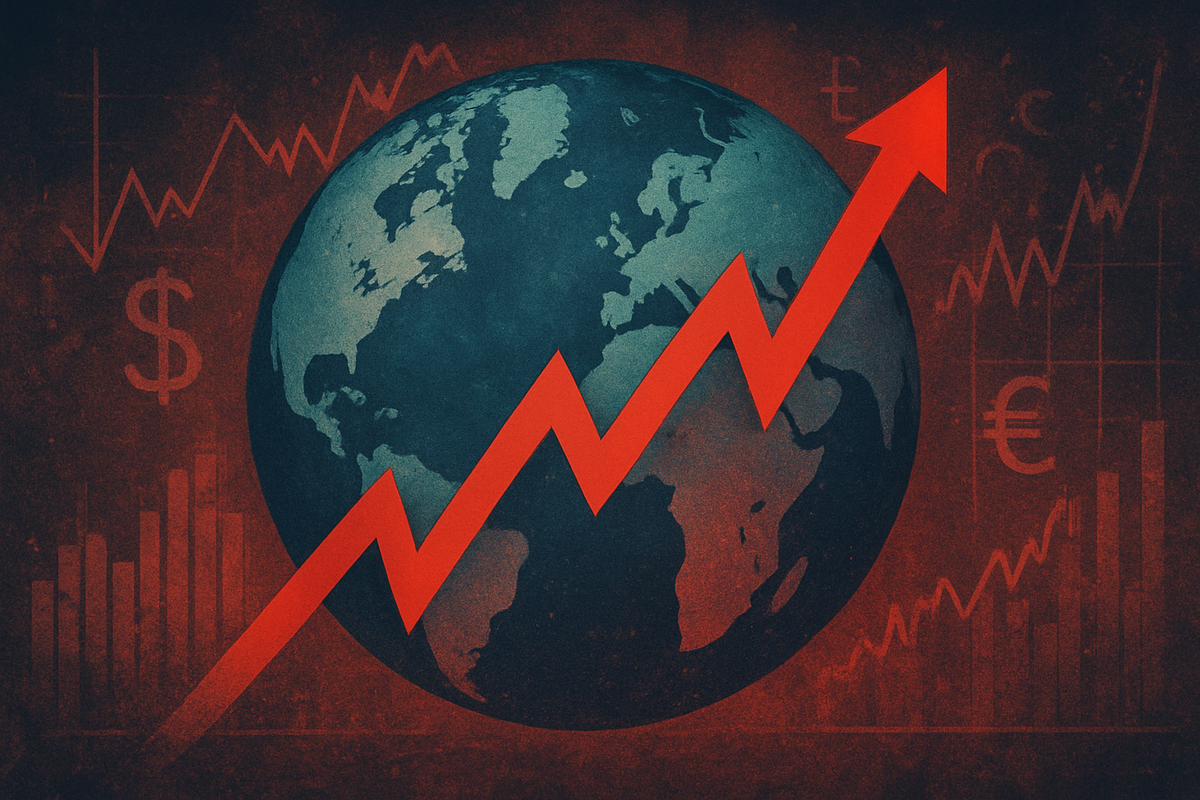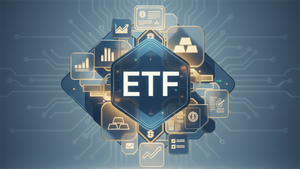
As November 2025 unfolds, global financial markets find themselves in a complex and challenging environment, bracing for the enduring grip of inflation. Despite some signs of moderating headline figures, particularly in certain regions, underlying price pressures and "stickiness" in core inflation measures persist. This nuanced inflationary landscape is testing market stability, squeezing corporate profits, and forcing central banks and governments into a delicate balancing act between taming prices and fostering economic growth. Investors and businesses alike are navigating a period of heightened uncertainty, where traditional economic models are being re-evaluated and strategic adaptability is paramount.
The immediate implications are palpable: cautious market sentiment, increased volatility, and a re-evaluation of risk across asset classes. Corporate earnings, while showing resilience in some sectors, face significant headwinds from rising operational costs and shifts in consumer spending habits. The prolonged nature of these inflationary pressures suggests that the global economy is in for a sustained period of adjustment, demanding vigilance and strategic pivots from all stakeholders.
Detailed Coverage: The Nuanced Battle Against Persistent Prices
The global inflationary landscape in November 2025 is characterized by a divergence between headline and core inflation, alongside varied regional trajectories. While the International Monetary Fund (IMF) projects global headline inflation to fall to 4.4% in 2025, underlying price pressures remain stubbornly high in key economies. In the United States, the Consumer Price Index (CPI) is anticipated to average 2.7% for 2025, with core inflation stubbornly hovering near 3%. Daily "nowcasts" for November 2025 indicate a year-over-year CPI of 2.97% and core CPI of 2.95%, with economists widely expecting inflation to accelerate further in the fourth quarter, potentially reaching 3% for CPI, partly driven by new tariffs. This signifies that while volatile components like energy might ease, fundamental price increases in services, housing, and labor are proving difficult to dislodge.
The timeline leading to this persistent inflationary moment stretches back to the post-pandemic recovery. Initial surges were fueled by robust demand, exacerbated by deep global supply chain disruptions and the energy shocks from the war in Ukraine in 2022. While disinflationary forces gained traction in late 2022 and 2023 as supply chains eased and aggressive monetary tightening took hold, services inflation has remained elevated. Now, in late 2025, new factors like escalating trade tariffs, particularly in the U.S., and ongoing geopolitical tensions are threatening to rekindle inflationary pressures, creating a complex and unpredictable environment.
Key players, primarily central banks and governments, are at the forefront of this battle. Central banks globally are navigating a delicate path, with some like the U.S. Federal Reserve initiating rate cuts (e.g., in September and early November 2025) in response to a weakening labor market, while others, such as the European Central Bank (ECB), maintain a more cautious "wait and see" approach as inflation nears its target. The Bank of England (BoE) has also held rates steady in November 2025, awaiting clearer signs of inflation returning to its 2% target, while the Bank of Japan (BoJ) continues its gradual normalization from sub-zero rates. Governments, meanwhile, are grappling with high public debt and are increasingly resorting to industrial policies and tariffs, which, while aiming to boost domestic production, can inadvertently fuel consumer prices. Initial market reactions reflect this uncertainty, with volatility persisting, a flight to safe-haven assets like the U.S. dollar, and a cautious approach to long-term investments.
Winners and Losers in the Inflationary Crucible
Persistent global inflation in November 2025 creates a clear divide between companies and sectors that can thrive and those that will struggle. Winners typically possess strong pricing power, allowing them to pass on increased costs to consumers without significant demand destruction. This includes Consumer Staples companies like Procter & Gamble (NYSE: PG) and Coca-Cola (NYSE: KO), whose essential products maintain demand inelasticity. Similarly, Healthcare/Biotech firms such as Johnson & Johnson (NYSE: JNJ) and Vertex Pharmaceuticals (NASDAQ: VRTX), particularly those with proprietary drugs or treatments, can command premium pricing. Select Technology Niches like semiconductors, exemplified by NVIDIA (NASDAQ: NVDA) with its AI-driven chips, and Software-as-a-Service (SaaS) providers such as Adobe (NASDAQ: ADBE) and Netflix (NASDAQ: NFLX), benefit from high demand, recurring revenues, and limited exposure to rising input costs. Payment processors like Visa (NYSE: V) also demonstrate strong pricing power through their fee structures. Companies with robust domestic supply chains, like Caterpillar (NYSE: CAT), are less exposed to tariffs and global disruptions, enabling them to offset rising raw material costs.
Conversely, sectors and companies lacking pricing power or heavily exposed to rising input costs and shifting consumer behavior are likely to lose. The Consumer Discretionary sector is particularly vulnerable, as reduced purchasing power leads consumers to cut back on non-essential spending. Retailers of luxury goods, travel, and leisure companies face significant headwinds, with consumers trading down to more affordable alternatives. Industries heavily reliant on international supply chains and exposed to tariffs, such as Manufacturing, Wholesale Trade, and Transportation, face higher operational costs that are difficult to absorb or pass on. Companies with high fixed costs and limited ability to raise prices, or those burdened by significant debt, will also see profit margins squeezed as interest rates remain elevated. Real estate development and construction, for instance, grapple with skyrocketing material costs, labor shortages, and higher financing expenses. Small-cap stocks and certain high-growth technology companies with stretched valuations may also face investor rotation into more defensive assets, as economic uncertainty prevails.
Wider Significance: A Shifting Global Paradigm
The enduring grip of inflation in November 2025 signifies more than just fleeting price pressures; it points to a fundamental shift in the global economic paradigm. This event fits into broader industry trends emphasizing supply chain resilience and localization. The vulnerabilities exposed during the pandemic and exacerbated by geopolitical tensions have driven companies to diversify suppliers, invest in automation, and consider onshoring production, even if it means higher long-term costs. This trend, coupled with new industrial policies and tariffs, suggests a move away from hyper-globalization towards more regionalized and secure supply networks.
The ripple effects on competitors and partners are profound. Companies with agile supply chains and strong balance sheets are gaining a competitive edge, while those reliant on complex, distant networks face increased costs and operational risks. This environment fosters new partnerships focused on regional sourcing and technology integration, while traditional relationships built solely on cost efficiency may fray. Furthermore, divergent monetary policies among central banks create currency volatility, impacting trade dynamics and the competitiveness of export-oriented industries. For instance, a stronger U.S. dollar due to relatively higher interest rates can make U.S. exports more expensive, affecting global trade balances.
Regulatory and policy implications are significant. Central banks are under immense pressure to maintain credibility while navigating an economic landscape where traditional tools may be less effective. The U.S. Federal Reserve's recent rate cuts, driven by a weakening labor market despite persistent inflation, highlight the complex trade-offs involved. Governments, meanwhile, are increasingly employing fiscal policies and tariffs, which, while intended to support domestic industries, risk further fueling inflation and complicating central bank efforts. The debate over central bank independence is also intensifying, as economic and political forces converge. Historically, periods of persistent inflation, such as the 1970s oil shocks, illustrate the dangers of premature policy easing and the long-term damage to economic stability when inflation expectations become entrenched. Unlike the 1970s, however, many nonfinancial industries have managed to maintain elevated profit margins, indicating a greater ability to adapt or pass on costs.
What Comes Next: Navigating the Uncertain Path Ahead
Looking ahead, global markets face a period defined by continued volatility and the need for strategic adaptation. In the short term (next 6-12 months), the trajectory of inflation will heavily depend on central bank actions and geopolitical developments. While the Federal Reserve is expected to continue its easing cycle into 2026, contingent on labor market and inflation data, other central banks may maintain a more hawkish stance. This divergence could lead to further currency fluctuations and varied regional economic performances. A cooling labor market, particularly in the U.S. and Eurozone, signals potential headwinds for consumer spending, complicating the growth outlook. The threat of escalating trade tariffs, particularly between the U.S. and China, remains a significant upside risk to inflation.
In the long term (beyond 12 months), the global economy is projected to slow but maintain underlying resilience, though volatility may become the "new normal." Transformative technologies, especially Artificial Intelligence (AI), are expected to drive long-term opportunities, despite current concerns about "sky-high valuations" in the sector. Companies will likely continue to invest in automation and supply chain diversification to mitigate future cost shocks. This could lead to increased capital expenditure in robotics, AI, and domestic manufacturing capabilities. Potential strategic pivots for businesses include reassessing pricing strategies, diversifying suppliers, strengthening financial management, and leveraging technology for productivity gains. Investors, conversely, will need to prioritize diversification across asset classes and geographies, focus on quality companies with strong pricing power, and consider inflation hedges like real estate and commodities.
Potential scenarios range from a "choppy but resilient" base case, where growth slows but avoids a deep recession, to more challenging outcomes like "stagflation" – a period of low growth, persistent inflation, and high unemployment. Another critical scenario is "trade war escalation," where further tariff increases lead to entrenched trade friction, severe supply chain disruptions, and sustained upward pressure on consumer prices. Each scenario demands a different approach, underscoring the need for flexible and adaptive strategies from both businesses and investors.
Comprehensive Wrap-Up: Adapting to the New Economic Reality
As November 2025 concludes, the enduring grip of inflation remains the defining characteristic of global financial markets. The key takeaway is that inflation is not a transient phenomenon but a persistent challenge, shaped by a confluence of economic, geopolitical, and structural factors. While headline figures may show signs of moderation, the stickiness of core inflation, particularly in services and due to trade policies, indicates that the battle is far from over. Central banks are navigating an unprecedented tightrope walk, attempting to quell inflation without stifling fragile economic growth, often with divergent policy approaches that add to market complexity.
Moving forward, the market will continue to be a volatile arena where adaptability is key. Traditional investment strategies are being re-evaluated, with the conventional 60/40 portfolio facing scrutiny as bonds exhibit a closer correlation with equities in this inflationary environment. Corporate earnings, while generally robust, will face ongoing pressure from elevated input costs, necessitating a focus on efficiency and pricing power. The lasting impact of this period will likely be a more regionalized global economy, characterized by resilient but potentially more expensive supply chains, and a greater emphasis on domestic production.
Investors should remain highly vigilant in the coming months. Close attention must be paid to inflation data, particularly core CPI and PCE reports, and the underlying drivers like energy, shelter, and services components. Central bank guidance from the Federal Reserve, ECB, and Bank of England will be crucial for understanding future interest rate paths. Labor market trends will signal the health of consumer demand, while geopolitical developments and trade policy changes will continue to introduce volatility. Finally, analyzing corporate earnings for signs of pricing power and cost management will be essential. Diversification across asset classes, including inflation hedges like Treasury Inflation-Protected Securities (TIPS), commodities, and dividend-paying stocks in resilient sectors, coupled with a focus on quality companies and systematic investing strategies, will be paramount for navigating this complex and evolving economic landscape.
This content is intended for informational purposes only and is not financial advice






